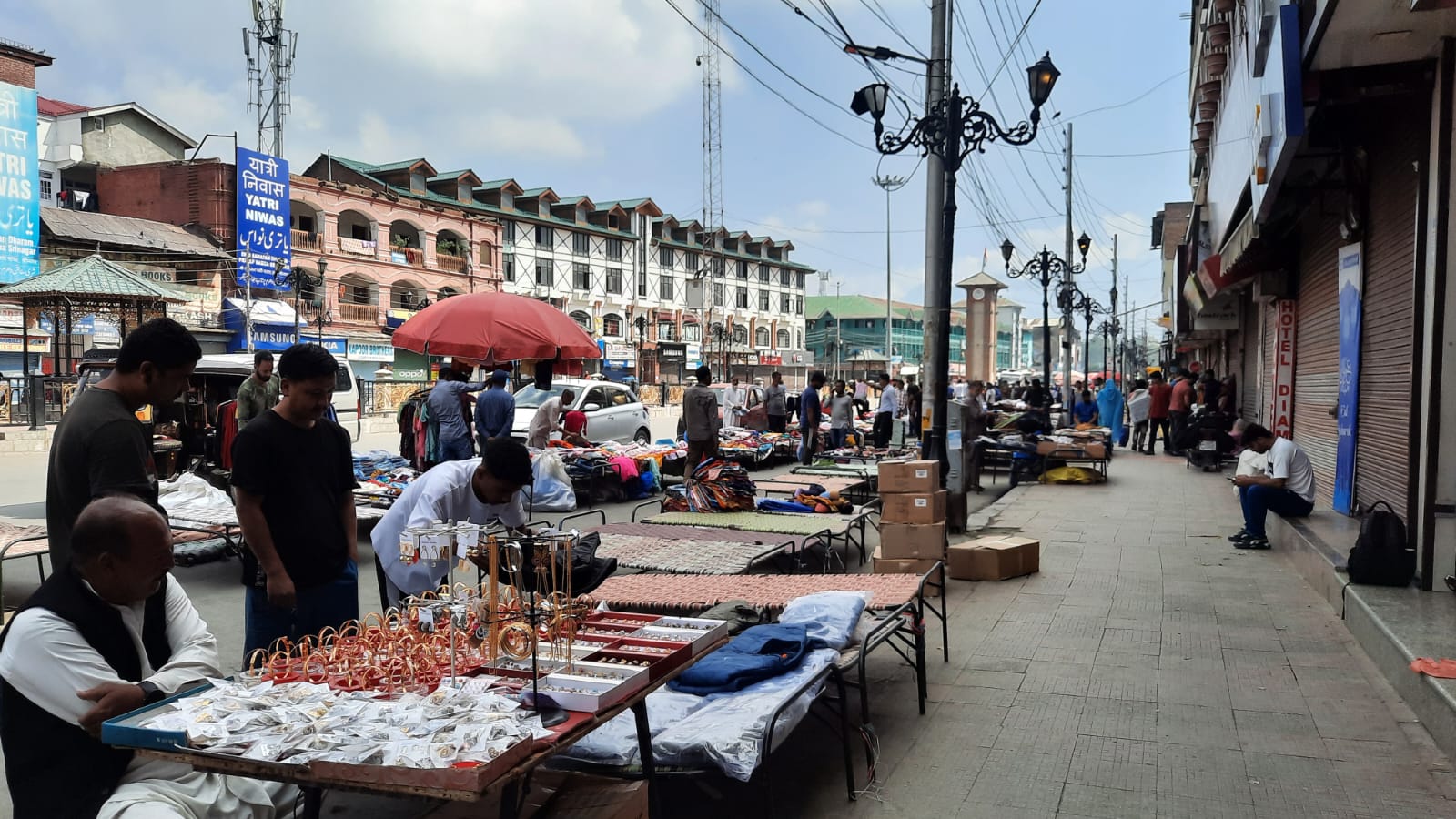
On 5 May, more than 50 Dalit houses – all belonging to Jatav families – were burnt down at Shabirpur village in Uttar Pradesh’s Saharanpur district. Later, on 23 May, violence again broke out after the BSP supremo Mayawati visited the village. Waving swords and wielding guns, Rajput men have been seen moving freely in many villages and towns of the district. Two Jatavs were murdered in Shabirpur on the day of Mayawati’s visit. The entire area has been gripped by tension amid fears that the violence may escalate.
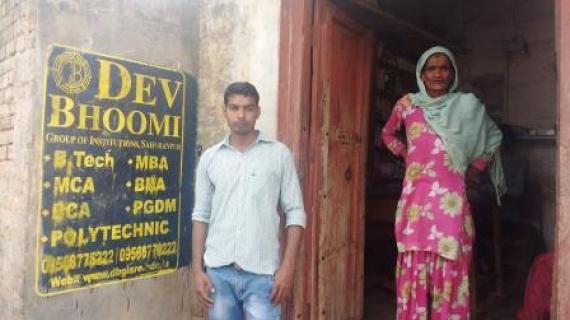
The political blame-game has begun but few questions remain unanswered. Why are the police trying to hide links of Sher Singh Rana, who was convicted of and jailed for killing Phoolan Devi, to this incident? The victims say that they saw houses being set afire not with petrol or diesel, but with some sort of self-igniting balloons. Who had arranged for these balloons? The use of balloons and other circumstantial evidence indicate that the dispute, over a “DJ” (music system on wheels usually accompanied by a dance troupe) being played as it was taken through Shabirpur on March 5, was a result of meticulous planning and was used as a pretext to teach the Dalits a lesson.
Shabirpur is a Jatav-dominated village, with a sprinkling of Rajputs, about 29km from the district headquarters. The Jatav youths of Shabirpur are not only literate but almost 75 per cent of them are graduates. Their prosperity is growing and they have had enough of feudal dominance. Ambedkarism has not only infused self-respect but also some degree of rudeness in them.
About four kilometres away from Shabirpur is Shimlana – a village of prosperous Rajputs. The elites among Rajputs of the village have moved to Delhi, Mumbai, Bengaluru and even abroad. But there are also Rajputs who have been left behind in the race for prosperity. Their world consists of their small landholdings, petty jobs, small contracts, bullocks, buffaloes and tractors. Their world ends in Saharanpur, where they can be seen moving around trying to hide their decrepit economic status behind the veneer of feudal pride.
These Rajput youths are easy ammunition for those who want to further their politics in the name of the return of Rajput rule. That is why Rajput leaders keep on visiting the village. The village itself has been playing host to Rajput-centric programmes quite frequently.
What really happened?
On the day of the incident (5 May), Shimlana was hosting a function to celebrate Maharana Pratap Jayanti. Rajput leaders from all over North India were invited to the programme. There were around 2,500 attendees, including Rajputs from Shimlana and the surrounding villages, besides around 800 guests from Uttarakhand, Rajasthan, Haryana, Bihar, Madhya Pradesh and Chhattisgarh. The programme was scheduled to commence at 9am and continue till 5pm. One of the prominent faces at the programme was Sher Singh Rana.
Also Read: Devious mind of Phoolan Devi’s killer behind Saharanpur violence
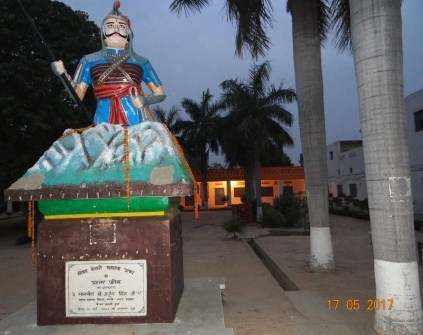
Around 9am, some Rajput youths were heading out from Shabirpur to attend the programme in Shimlana. They were mostly locals, accompanied by a few outsiders. They were accompanied by the “DJ” and, according to the villagers, Shivkumar, the Jatav Pradhan of Shabirpur, made some comments about playing the DJ. Earlier, on April 14, the administration, at a complaint made by the Rajputs of Shimlana, had declined permission to the Shabirpur Dalits to hold a function to celebrate Ambedkar’s birth anniversary. The Pradhan’s comment was not serious enough to provoke violence but the youths accompanying the DJ lost their temper and created a big ruckus. They started waving country-made pistols and even fired in the air. In response, the Dalits assembled outside their homes and on terraces and began pelting stones. Initially, the Rajputs ran away but soon they reassembled there in bigger numbers. The Dalits again threw stones at them. This continued for about two-three hours, with the village turning into a battleground. At that time, there were around 50 Rajputs, while taking them on was the entire village.
Even while the pitched battle was on at Shabirpur, the Maharana Pratap Jayanti programme commenced in Shimlana with speeches. When the news of the Shabirpur incident reached the dais, the Rajputs became upset. Some speakers took the mike and appealed to the audience to keep calm. They said that the police was reaching Shabirpur and no one from the audience should go to the village – although around 50-60 youths were already on their way to the village. Rana announced from the dais that he had been informed on his mobile phone that three-four Rajputs had been shot at. He said that it would be cowardice to go ahead with the programme under the circumstances. He suggested that the programme be postponed and everyone march to Shabirpur. However, others on the dais did not agree. They knew what sending an angry mob to Shabirpur would entail. The programme continued, even as Rana kept on insisting that they wind up midway and march to Shabirpur. When others didn’t relent, Rana played his trump card. He took the mike and announced: “The blood of my brothers has been spilt and it is impossible for me to stay here any longer. Those who do not want to go can stay back and continue with the programme. I am going alone to meet my brothers.”

The Rajputs of Shimlana narrated to us these developments at the programme, and Rana himself, in his interview with us, confirmed that this is how it unfolded, though not in so many words (see video).
After such an announcement by a key guest from the dais, the programme could not have gone on. The programme was declared closed and about 1000 enraged youths, including a large number of outsiders, left for Shabirpur, where they selectively burnt down houses of Jatavs. Even when houses of barber-caste, OBC or even Dalit Valmiki families were just beside the Jatav homes, they were not touched. Interestingly, conscious of keeping their Rajput pride intact, the assailants did not loot the houses. Even cash, ornaments and other costly items were kept in some houses for weddings that were going to be held in the near future but these were not taken away; they were simply consigned to flames.
The fact is that there were no fatalities in the earlier clash between Jatavs and Rajputs. The reports about three-four Rajput youths being shot at were white lies. One youth from a nearby village, Rasoolpur, was hit by a stone. Others took him to hospital, where he later died. According to the then district magistrate, Nagendra Prasad Singh, he sustained an injury on his nose. The post-mortem report says that he died of asphyxia. (See below: Interview with the DM).
Rajput Regiment and Sher Singh Rana
Some Dalit youths of Saharanpur told the Forward Press team, which spent a couple of days in the district to report on the incident, that a new outfit called the Rajput Regiment had surfaced and had been very active over the last couple of months. Our enquiries revealed that before this incident, a meeting of the so-called regiment was held at Ghadkauli village, where the participants urged the administration to remove a signboard in Shabirpur that said “The Great Chamar”. They also issued a warning that if the board was not removed, the Rajput Regiment would remove it. We were also told that Sher Singh Rana had founded the regiment and about 50-60 youths of the area were associated with him.
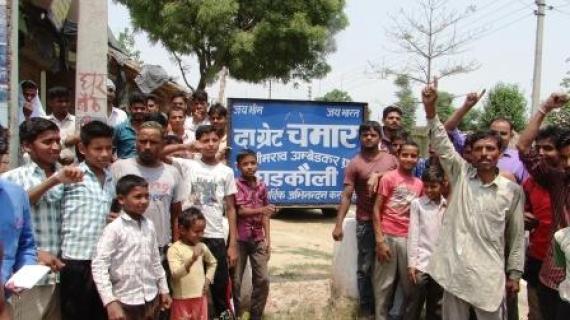
The Rajputs of Shimlana confirmed that some people associated with the regiment were present at the Maharana Pratap Jayanti function. Rana himself told us in his interview that on that day, a meeting of the Rajput Regiment was held in a separate room although he insisted that he had nothing to do with the organization. But Forward Press is in possession of a photograph in which Rana, accompanied by a few young men in what looks like to a separate room, is seen holding the banner of the Maharana Pratap Jayanti function.
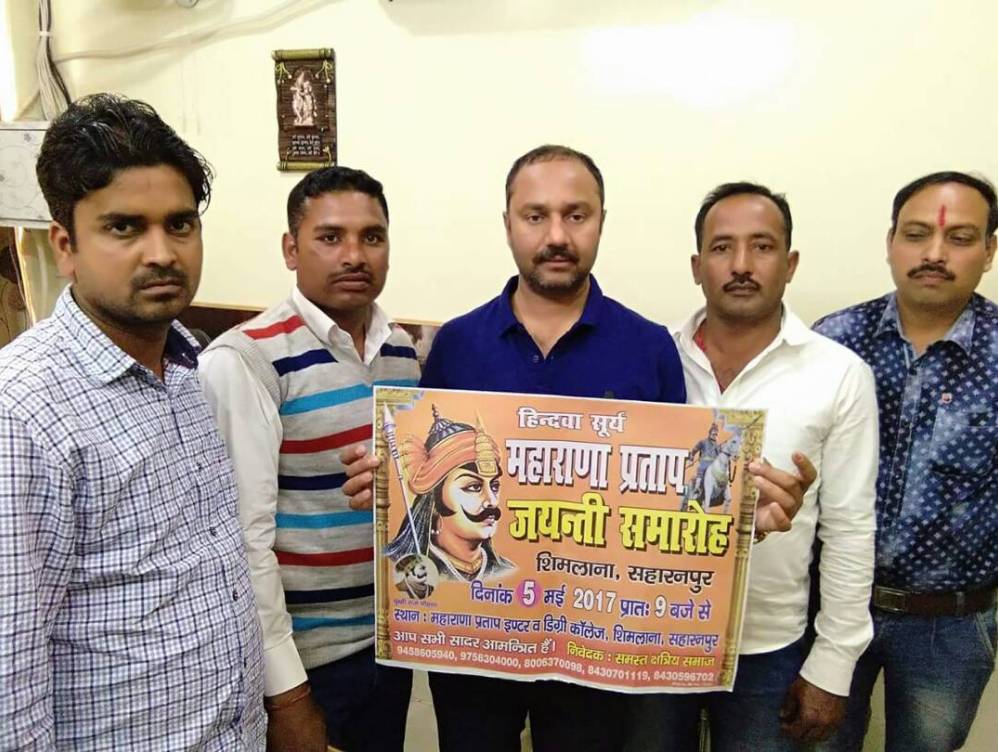
Who was behind the Maharana Pratap function?
Maharana Pratap’s Jayanti was celebrated in Shimlana this year for the first time and that too on such a grand scale that guests were invited from many states. Who was behind it? Who had arranged funds for the grand show?
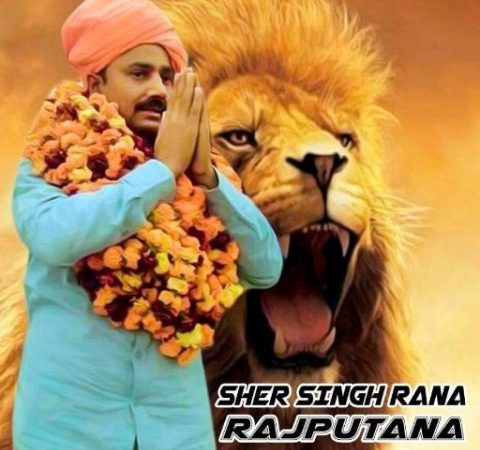
Veerpal Singh, the husband of the Pradhan of Shimlana, himself a Rajput, made no attempt to hide his reservations about the function. He said that outsiders had organized the programme without even seeking the consent of the pradhan. Six-seven local youths had helped these outsiders. (See video). But Veerpal refused to divulge the names of neither these outsiders nor their associates in the village.
The key question is: Who arranged such a grand function in such a remote village? Was it the person who was the chief guest at the function?
Which chemical was used to set houses ablaze?
The 1000-strong mob that had reached Shabirpur from Shimlana first came across the Ravidas Temple. A high platform had been built on the temple premises for installing a statue of Ambedkar. However, at the complaint of the Rajputs, the administration had barred the installation of the statue. The mob vandalized the temple before marching ahead. Then it set the Jatav home that fell on the way and beat up men and women of the community. The first home they targeted was immersed in preparations for a wedding. They destroyed the house. Then, they set afire all Jatav homes lining the main street of the village.
The Jatav men and women, who were eyewitnesses to the incident and who were beaten up by the Rajputs, told us that 40-50 youths in the crowd were setting the houses ablaze. They were holding balloon-like small objects and hurling them towards the homes. Whenever these balloons hit a surface – the ground, thatched roofs, beds or piles of straw – they exploded into balls of fire. The balloons were apparently filled with some self-igniting chemical. Eyewitnesses showed us black marks of that chemical on the walls. These marks were seen on cemented surfaces, precisely in those spots where the balloons had hit. After hitting the cemented surface, they had burst, splattering the chemical and leaving behind the mark. Obviously, the cement did not catch fire.

The fact that these balloons were available with the youths attending the Maharana Pratap function clearly points to not only a well-planned conspiracy but also that a well-organized group was behind the attack.
The police investigation has completely overlooked the use of this chemical. The marks on the walls were not subjected to any forensic examination.
The role of SSP Subhash Chandra Dubey in the entire incident is very suspect. He planted anti-Dalit stories in local newspapers and, despite dozens of clear eyewitness statements, refused to bring on record the use of the chemical-filled balloons. A professor of chemistry told us that such an explosive can be made using a chemical called dinitrotoluene-trinitrotoluene and cipicaric.
Subhash Chandra Dubey, senior superintendent of police (interviewed by Sanjeev Chandan on 19 May)

Was any chemical used in arson in Shabirpur?
Any fire – I mean fire that burns cow-dung cakes or straw – gets automatically extinguished in 24 hours. You need not do anything to douse it. It is a village. I am also a resident of a village. Villages have kutcha houses. Food is cooked under thatched roofs. Rubbish is also burnt every day. You could not have seen the smoke of a fire that was lit on the 5th on the 18th or the 19th.
No, I am talking the marks of some chemical.
It can be marks left by the smoke. Suppose, there is a burn on the wall. If you do not paint the wall with lime for five years, the black spot will still be there.
No, but we felt…
There is nothing like this. This is entirely hypothetical. We have visited Shabirpur seven times between the 5th and the 12th.
No, I am not talking about the smoke. We felt that instead of petrol or diesel some chemical was used
No, there is nothing like that.
What does the post-mortem report say about the death?
Asphyxia. There is an injury on the head but that has not been identified as the cause for death. He died of asphyxia.
What do you know about Ghadkauli? Were any threats issued to remove the “The Great Chamar” board?
Let them put up any board – The Great Chamar, the Great Pandit, the Great Rajput – what difference does it make? It was this man who had blackened the statue of Babasaheb Ambedkar when trouble had broken out there the last time. He was behind the trouble. There are intelligence reports. He has a devious mind. All this is the result of his devious mind. He is talking of violence and counter-violence.
Are you talking about Chandrashekhar?
Yes. Who else has anything to do with it?
You must be tense. Chandrashekhar will be holding a meeting in Jantar-Mantar on the 21st?
Why will I be tense? What will happen? What can happen? Not even a handful of people from Saharanpur will be attending the meeting. All political parties have disowned him. The BSP has said that it has nothing to do with such anarchical elements. It is not a registered organization. It exists nowhere – not even on paper. Why will we be tense over such a person? We have got a welfare committee set up. We did not allow the tension in one village to spread to the others. Is this not our achievement?
But the village is tense.
Yes. But we did not allow the tension to spread. Till a person who can create nuisance is free, tension will be there. Once he is behind bars, the tension will ease automatically.
Nagendra Prasad Singh, district magistrate (interviewed by Sanjeev Chandan on 18 May)
Do you feel that tension is mounting?
I feel that all youths, irrespective of caste or religion, have very low levels of constructive engagement. Unemployment is rampant. The youths are educated but cannot find work. Secondly, there is a feeling among a section of the people that something is being snatched from them. Their psyche is wounded. Due to this, social tension and conflict have become all-pervasive. This is as true of North India as other parts of the country. Any incident that takes place anywhere due to any reason becomes a mobilization point; it becomes the topic of discussion.
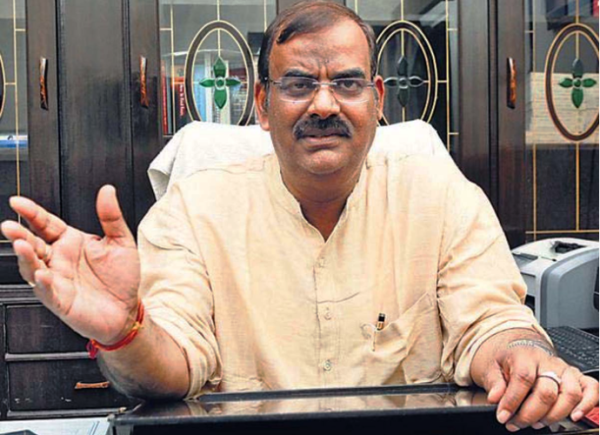
I took charge here only ten days ago. Earlier, I was in Greater Noida. Every day, I have been holding meetings with one or the other stakeholder in society – from headmasters of primary schools to principals of post-graduate colleges, intermediate colleges, CBSE schools, former village pradhans, current pradhans, BDCs [block development committees], district panchayat office-bearers, political parties, doctors, etc. I am asking them why they want to confine great personalities into caste moulds. I have been interacting with them for up to 45 minutes, I’ve been lecturing them. I am trying to convince them. I don’t know why people are dividing great men and women on the basis of their castes. Neither does Maharana Pratap belong to the Thakurs nor do the Dalits have a patent on Ambedkar.
Do you have any information about a Rajput Regiment being set up?
What is there about it? There is only one person. He is saying that if there is a Bhim Sena, we should also have our sena.
Is that person Sher Singh Rana?
Yes, he has come here from Roorkee. Although no such regiment has been formed nor will people here allow any such regiment to come up. I have talked with almost all responsible members of society. They are not in favour of any such body.
I have met Sher Singh Rana. He talks about all Hindus while he sets up the Rajput Regiment.
Sanjeev ji, these are confused people. When they do not have any status in society, they try to build a status through such things. He has never come forward. He has never met us. But the intelligence is keeping an eye on them. If they try to create any disturbance, we will take action against them. The intelligence wing is watching; the police are watching.
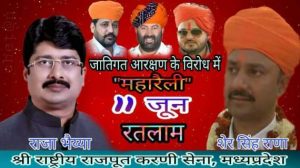
We want to confirm one or two things. For instance, we found that some chemical was used to set houses ablaze in Shabirpur. Maybe we were mistaken. Secondly, the post-mortem report of the deceased youth says that he died due to asphyxia. We want to confirm both these things.
You see, the reasons given are not conclusive. The doctors do not give a conclusive reason for death. They only hint at things. Asphyxia could result from someone falling down and people trampling on him. People can get asphyxiated in a stampede too. There can be many reasons. We will be able to comment on it only once the investigations are complete. But primarily, this is what the doctors have said.
Any injuries on the body?
There is an injury on the nose. But it was not major; it could not have been fatal. No serious injury on the body was visible. The doctors say that the injury might have caused the death, asphyxia might have caused it. We cannot comment on medical reports. It is the police who are investigating.
Can you comment on the possible use of chemicals?
I cannot say anything because the police are investigating. But the eye-witnesses were talking about a motorcycle. I will explain the entire chain of events to you. I don’t know what you were told by the people. I will tell you what I know. What had happened was that our SDM had given permission for holding a meeting in Shimlana, which is about four kilometres from Shabirpur. Many villagers had assembled there. People from nearby villages also go to attend such events. Some 10-12 youths of Shabirpur were heading out with a “DJ” [meaning the music system on wheels that is usually accompanied by a dance troupe] to take part in the meeting.
The village pradhan telephoned the SDM saying that they should not be allowed to let the DJ play. The SDM telephoned the police station in-charge. He went to the spot and stopped the playing of the DJ. The DJ was sent back and the youths went ahead. They telephoned some people who were already at the meeting and told them that they had been insulted – that Maharana’s DJ was not allowed to accompany them. Some fifty youths motorcycle-borne youths came and confronted the station in-charge. They wanted to know why they were not allowed to play the DJ. This is how it all began. The villagers must have thought that they had come to attack them. The villagers stoned the youths. The police station in-charge was also hurt – his vehicle was also damaged. The police-station in-charge was an SC but the Dalits did not know that. He wrote his name as N.P. Singh. The Dalits thought he was a Thakur, so they pelted stones at him too. One of the stones hit the youth who died later. The police station in-charge says that after pelting stones, the youths tried to escape. In the melee, this man fell down and others trampled over him. Two boys took him to a hospital. He died on the way. The hospital was only 10 minutes away. These boys then made phone calls. They said that two to three had died. They spread rumours, they exaggerated. Now, people were already assembled in Shimlana. They again attacked the village. I would say they ran amok. It was very bad, condemnable.
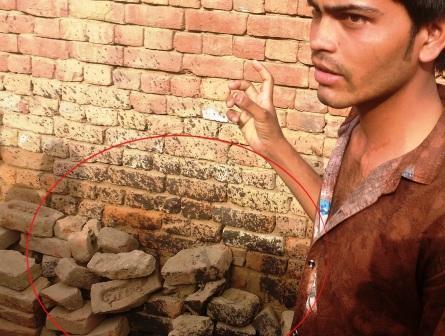
The police station in-charge pushed them back. He also dispersed the stone-pelters. He phoned the SSP and told him that things were under control. But they again returned after 20-25 minutes. The police station in-charge was still there. He was confident that they wouldn’t return. The fool did not realize that the programme was under way in Shimlana, that they can always provoke the people. He did not apply his mind. When they started arriving, I was informed. I immediately left for the place along with the SSP. It takes us 45 minutes to get there. Before I got there, they had set piles of straw on fire and were moving towards the houses. But call it god’s grace or coincidence, I got there. I jumped out of my vehicle and, without even caring to wear a helmet, plunged into the crowd. I told them that if they moved ahead any further, I would use force – I might use lathis or even open fire. We somehow pushed them back about 100 metres and then 200 metres. We had summoned fire engines. We used a little force to make way for the fire engines. It is true that had I reached there even 10 minutes later, they would have set all houses ablaze. But they could not do that. No house was completely burnt down. The thatched roofs of some houses were burnt; the roofs of other houses were damaged. But had we reached there even a bit late, I am sure they would have burnt down houses. I had pushed them back and I remember their faces.
Do you think all this was pre-planned?
To tell you the truth, Sanjeev ji, prima facie, it does not seem pre-planned. But nothing can be said definitively. There are many stakeholders in politics. Some say that the village pradhan asking the youths not to play the DJ was at the root of everything. He should not have done that. If someone is going to a function 5 km away, what is the problem if a DJ is being played? They would have been out of hearing distance within 5-10 minutes.
Dalits say that when they themselves were not permitted to play the DJ, why were the others?
At that time, the issue was not the DJ. They wanted to install a statue of Ambedkar. I was not posted there at that time. The Supreme Court has banned installation of statues. It has said that statues cannot be installed at public places and if it has to be done, it can be done only with prior permission of the government. They had tried at that time, but the administration had declined permission. The Supreme Court has strictly ordered that no statues should be installed. The Dalits thought that Thakurs were opposed to the statues. But the point is that – if one looks at the facts dispassionately – they don’t have respect for great personalities. The Dalits could have said, “Fine, if you want to play DJ, go ahead but leave within ten minutes.” But that could have happened only if they – I mean both [communities] – had respect for great personalities.
If you confine a great personality to your caste, you are not giving him respect, you are insulting him … and if you are fighting with each other, if you are unleashing violence in the name of great personalities, you are harming the nation. Are admirers or followers of Rana Pratap and Ambedkar like India and Pakistan or India and China? I have admonished them and have had a committee set up. In a couple of days, there will be complete peace in the area.
Maybe it is news to you or maybe you know it already, but when we reached Ghadkauli, we were told that there is a dispute over a signboard. It has been going on for the past one year. Also, a panchayat was held in which it was declared that if “you don’t remove the board yourself, we will remove it”.
No such panchayat was held here. It was held somewhere else.
I checked with the police inspector and he told me that he has received no such complaint.
We know more than the people do. No panchayat was held on that day. Some people had discussed the issue with the SSP and me. We had told them that they should not get into all this. If someone says he is great, let him say it. What’s the issue? What is your problem?
But tension is mounting. Our good wishes are with you. We hope and wish that you would bring things under control.
If there was no tension, I would not have been working for communal harmony for 10-12 hours every day for the past 10 days.
One more question, about Sadak Dudhauli, which is close to your city.
I will tell you frankly. It is an old incident. I don’t know much about it but action was taken. They [the culprits] are in jail. A meeting was arranged between Dalits and Muslims. There is no dispute there.
People are preparing to hold a meeting in Shabirpur.
I had taken the initiative. I had told them that action would be taken against anyone who did anything wrong. The rest of the people should sit together – they live in the same village – and talk to one another. I have visited the village four times. I have been going from house to house. I arranged food packets for 79 families. I sanctioned Rs1 lakh each as relief for the victims’ families. The fact is that the loss is more emotional than financial. They [Rajputs] insulted them [Dalits]. I had dealt with the Akhlaq case. The media people must be aware that I am sensitive when it comes to social conflict. I don’t think the police are the solution. I think the solution lies in strengthening the chemistry between various social groups.
But your approach will be even-handed?
How else can it be handled?
Our best wishes. Presently, the things that are happening – after the change in government – do have an impact. Maybe, this is one of them.
No, no. I have stopped those who were going around with swords in hands. They all have been identified. Ten of them have been arrested. The rest will be arrested soon. I have issued written orders that anyone who is seen with a sword should be immediately put behind bars under the Arms Act. My orders are clear.
– with inputs from Sanjeev Chandan, Anil Kumar and Arvind Sagar
Based in New Delhi, India, ForwardPress.in and Forward Press Books shed light on the widespread problems as well as the finer aspects of Bahujan (Dalit, OBC, Adivasi, Nomadic, Pasmanda) society, literature, culture and politics. Next on the publication schedule is a book on Dr Ambedkar’s multifaceted personality. To book a copy in advance, contact The Marginalised Prakashan, IGNOU Road, Delhi. Mobile: +919968527911.
For more information on Forward Press Books, write to us: info@forwardmagazine.in


